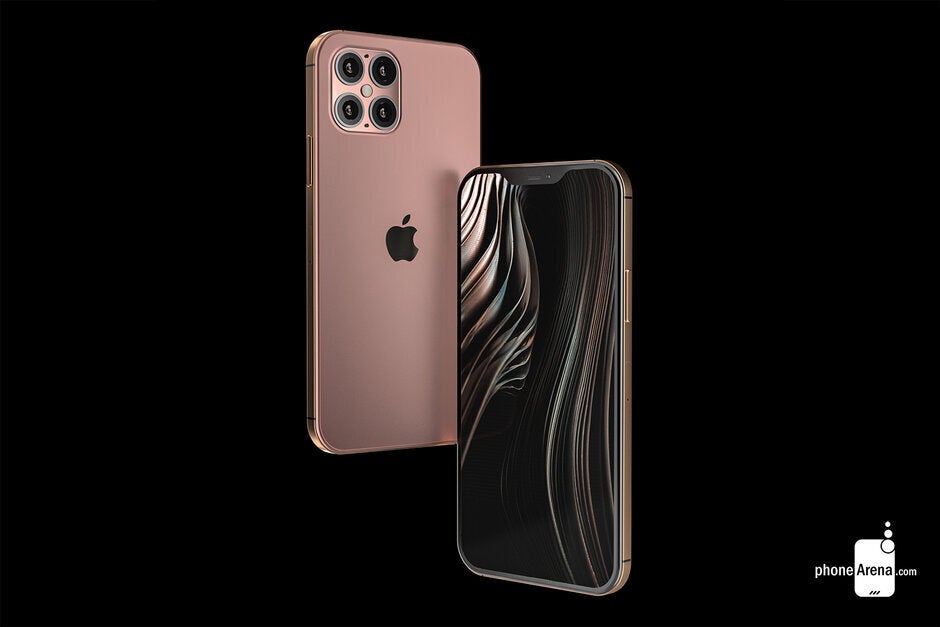Read why Apple is using its own design for a very important 5G iPhone component

A new report published today by Fast Company states that Apple has decided to go ahead and design its own 5G antennas for the upcoming 2020 iPhone models expected to be unveiled this September. An anonymous source familiar with Apple's plans says that the company decided not to use Qualcomm's QTM 525 millimeter-wave (mmW) antenna module because of its looks. Apple is aiming for a sleek industrial design for the iPhone 12 series.
Thanks to its many legal issues with chipmaker Qualcomm, Apple went through the beginning of last year desperately seeking a source of 5G modem chips. While Apple turned to Intel, behind the scenes the iPhone manufacturer was not confident about Intel's ability to deliver a 5G modem chip in time for its 2020 5G phones. So last April, Apple and Qualcomm buried the hatchet and agreed to a settlement.
No one wants to see a repeat of Antennagate
Both companies dropped all lawsuits filed against each other and Apple paid Qualcomm an unreported sum believed to be $4.5 billion in return for a six-year licensing agreement (with a two-year option) and a multi-year chip supply agreement. As a result, the first 5G iPhone models will be equipped with the Qualcomm X55 5G modem chip which supports 5G signals coming from sub-6GHz spectrum and 5G mmWave airwaves. This means that the first iPhone models capable of working with the next generation of wireless connectivity will support whatever 5G signals are available to Verizon, AT&T, T-Mobile, and Sprint subscribers.

Render of the Apple iPhone 12 Pro Max
Just in case Apple can't design a viable 5G antenna for the iPhone, the company is said to be working on a backup design for its 2020 handsets that uses Qualcomm's X55 5G modem along with Qualcomm's 5G antenna. While Apple might have to resort to this plan later this year, it would force Apple to make the iPhone 12 line a little thicker than it wanted. Qualcomm has stated that its QTM 525 antenna module "will support 5G smartphone designs sleeker than 8 millimeters thick.
Apple would also like to wean off the use of Qualcomm's components. Despite reaching the aforementioned settlement with the chipmaker, Apple still feels like it is "getting screwed on royalties by Qualcomm," according to Fast Company's source. That's because under Qualcomm's controversial chip selling practices a customer pays for the actual component being used and a royalty based on the price of the phone that will contain the part. These practices were found to be anti-competitive by Judge Lucy Koh after a trial was held earlier this year, but the DOJ is insinuating itself into an appeal filed by Qualcomm against the FTC. Apple is reportedly designing its own 5G modem chip and last year it purchased Intel's smartphone modem business for $1 billion. For a company that usually makes low-priced acquisitions under the radar, this transaction revealed how badly the company wants to escape the clutches of the San Diego based Qualcomm. We might not see Apple's 5G modem chip in an iPhone until 2025 at the earliest.
If Apple designing its own antenna doesn't make you a little nervous, you probably don't remember Antennagate. On the very same date (June 24, 2010) that the iPhone 4 was released, users started to complain that when they touched the lower-left corner of the phone, signal bars would drop off the handset. Apple ended up sending iPhone 4 buyers a rubber bumper to prevent their hands from interfering with the phone's antenna which was designed by Apple. A more recent Apple-designed antenna required twice as much power to generate the same amount of signals as those produced by other firm's antennas.
Besides Apple's track record in designing this important component, mmWave 5G antennas are harder to design because they send and receive higher frequency signals than earlier handset models. Any design or manufacturing issue could cause connectivity problems. The 5G iPhone will have a "phased array" antenna with two parts that combine to form one radio beam that, with the help of the 5G modem chip, can be pointed in different directions without moving the antenna.
At this stage, anything is possible but for now, the odds favor an Apple-designed 5G mmWave antenna for the iPhone 12 line.
Follow us on Google News












Things that are NOT allowed:
To help keep our community safe and free from spam, we apply temporary limits to newly created accounts: